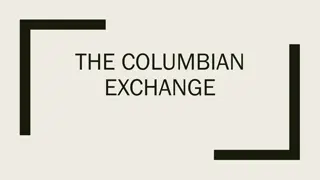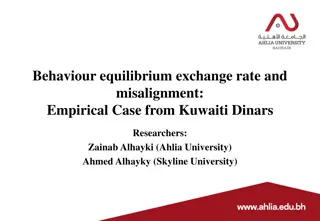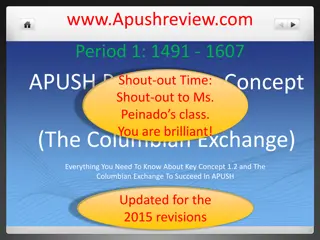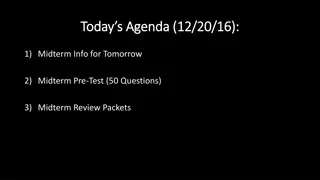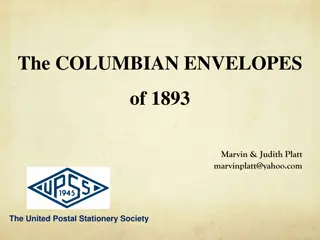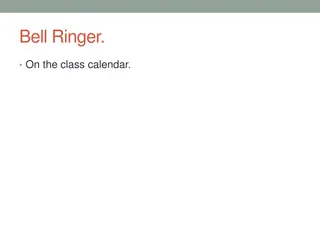
Understanding the Columbian Exchange in APUSH
Explore the impact of the Columbian Exchange through Key Concept 1.2 in APUSH, covering the exchange of goods, the transformation of societies, and the consequences of European expansion into the Western Hemisphere during the 15th and 16th centuries. Gain insights into the positives and negatives of this historical period and understand its significance in shaping the Americas, Europe, and Africa.
Uploaded on | 0 Views
Download Presentation

Please find below an Image/Link to download the presentation.
The content on the website is provided AS IS for your information and personal use only. It may not be sold, licensed, or shared on other websites without obtaining consent from the author. If you encounter any issues during the download, it is possible that the publisher has removed the file from their server.
You are allowed to download the files provided on this website for personal or commercial use, subject to the condition that they are used lawfully. All files are the property of their respective owners.
The content on the website is provided AS IS for your information and personal use only. It may not be sold, licensed, or shared on other websites without obtaining consent from the author.
E N D
Presentation Transcript
www.Apushreview.com Period 1: 1491 - 1607 APUSH Review: Key Concept 1.2 (The Columbian Exchange) Everything You Need To Know About Key Concept 1.2 and The Columbian Exchange To Succeed In APUSH
The New Curriculum and The Columbian Exchange Key Concept 1.2 European overseas expansion resulted in the Columbian Exchange, a series of interactions and adaptations among societies across the Atlantic. o Page 24 of the Curriculum framework The Columbian Exchange revolutionized life in the Americas, Europe, and Africa. Key Concept 1.2, I: The arrival of Europeans in the Western Hemisphere in the 15th and 16th centuries triggered extensive demographic and social changes on both sides of the Atlantic. o Page 24 of the Curriculum framework Big Ideas: o What were positives and negatives of the Columbian Exchange on both hemispheres? o What were reasons that led to European exploration?
The Columbian Exchange What was it? o The exchange of plants, animals, culture, humans, diseases, etc. between the Americas, Europe, and Africa Examples of goods: o Americas to Europe and Africa: potatoes, maize (corn), tomatoes o Europe to the Americas: wheat, rice, horses, chickens, oxen Impact of exchange? o In Europe and Asia: massive population growth due to new food o In Africa: Spanish and Portuguese used Africans from West Africa to be used as slaves in the Americas o In the Americas: spread of diseases (smallpox), social classes (Mestizos), horse transformed Native life (made hunting easier), Encomienda system
Key Concept 1.2, II European expansion into the Western Hemisphere caused intense social/religious, political, and economic competition in Europe and the promotion of empire building. o Page 24 of the Curriculum framework What drove European exploration and conquest? o 3 G s Gold, Glory, Gospel o To spread Christianity Spain Money and food from the Americas led to population growth in Europe and helped shift the economy to capitalism o Joint-stock companies used to raise $ for explorations Used in Jamestown (1607) New technology aided exploration: o Sextant could be used to find exact position on earth more precise sailing
Test Tips Multiple-Choice Questions and Short Answer: o Be familiar with the impacts of the Columbian Exchange not just food Increase in world trade, permanently connecting two hemispheres o Identify specific goods and their impacts horse and potato o Impact on Africans drastic growth in slavery Essay Questions: o Not likely since it is from period 1
Thanks for watching! Subscribe to my channel Help spread the word Questions? Comments? Ideas for videos? o Leave in comments

